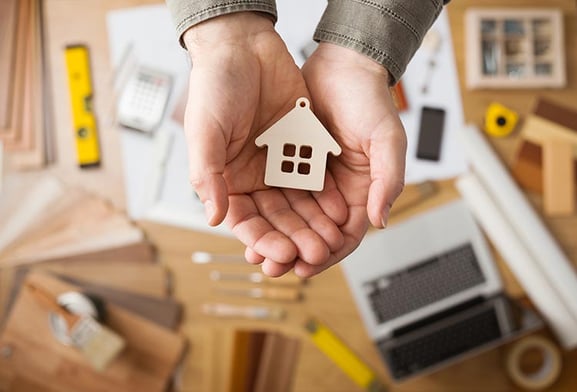
A 1031 exchange allows investors to sell one property and purchase another like-kind property while deferring taxes on gains. This doesn’t mean you must purchase the replacement property for the same price as the relinquished property. The replacement property can be a higher or lower value. But if you want to defer all gains, the replacement property must be at least of equal value.
In the case that you find a property of lower value, which is called a sale-down, you’ll need to pay taxes on the difference unless you decide to put the money towards property improvements. You’ll want to discuss any improvements with your qualified intermediary (QI) before starting the 1031 exchange. Property improvements are handled a little differently than a basic 1031 exchange.
Cash Boot
Cash boot (sometimes called just boot) is created when a sale-down occurs. But if you want to improve a property without adding new money to a 1031 exchange, you can utilize the boot for this purpose.
Below is an example of a 1031 exchange with boot:
$500,000 — Original purchase price
$750,000 — Sale price
$250,000 — Gain
$600,000 — Purchase price of the replacement property
$150,000 — Boot
The taxable amount is $150,000. This amount can go towards property improvements. There are some similarities between a basic 1031 exchange and a property improvement exchange. But one difference is the use of an EAT service.
Qualified Exchange Accommodation Titleholder (EAT)
For investors who want to improve a property and roll those improvements into a 1031 exchange, the IRS created an entity called a qualified Exchange Accommodation Titleholder or EAT to supplement a QI. The QI sets up the EAT. It is usually an LLC. Funds from the relinquished property go to the EAT, which uses those funds to acquire the replacement property. The QI is the titleholder of the replacement property and owner of the LLC. The investor can also add funds to the EAT if improvements are more than the available boot.
Property improvements must be completed within the 180-day timeframe to avoid creating a taxable event. Doing this allows the investor to include the cost of property improvements in the value of the replacement property. During the 180-day timeframe, the investor’s funds are “parked.” Once the improvements are complete, the property title is transferred from the EAT to the investor.
Basically, the investor acquires property with improvements from the EAT entity. If the investor takes the title to the property while there are ongoing improvements, it will not be considered like-kind property. It will also not increase the property’s value for exchange purposes.
The investor may find they can’t complete all improvements within the 180-day timeframe. To take advantage of any tax deferral, only improvements completed within the 180-day timeframe will be tax-deferred. Improvements made outside of the 180-day timeframe would be taxable if they were part of the boot.
Not all QIs provide EAT services. Check that any QI you plan to use does offer EAT services.
Build-To-Suit
The above 1031 exchange is called a build-to-suit exchange. It follows the same timeline rules of the 1031 exchange while involving the EAT in the transaction. During the 45-day identification period, once a property has been identified, the investor must also describe the expected improvements. While improvements are going on, the investor can request funds from the EAT to pay for the improvements.
There are three ways in which all funds are finally transferred to the investor:
- All improvements are completed.
- The 180-day deadline is reached.
- Improvements are not complete but add enough value for the property to be considered like-kind.
Another method for an improvement exchange is the reverse build-to-suit. In a reverse build-to-suit, the EAT acquires the replacement property before the relinquished property is sold. The investor must supply funds to the EAT for acquiring the replacement property. Invoices are still sent to the EAT to pay for improvements. But since there are no funds to pay for the improvements, the EAT must borrow money from the investor or lender to pay for the improvements. By the 180th day, the relinquished property is sold, and funds are transferred from the QI to the investor. The same three methods mentioned above for the transfer of final funds apply for a reverse build-to-sell exchange.
Selling down doesn’t always mean a taxable event must be created. If the investor is considering making improvements to the replacement property, rather than creating a taxable boot, the boot can be used for improvements. The process still follows 1031 exchange deadlines, but in addition to a QI, an EAT service and separate entity (i.e., LLC) are used to hold title to the property. If followed correctly, the end result is a non-taxable boot.



